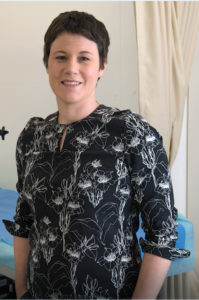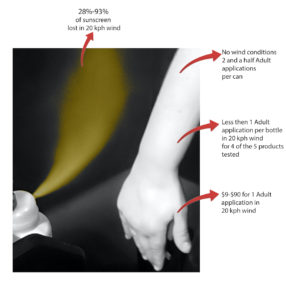A study by Griffith University researchers finds aerosol sunscreens were unable to deliver sunscreen in mildly windy conditions leading to poor protection against UV radiation.
The study found thatthe five aerosol sunscreens tested were ineffectiveintypical windconditionswith 28-93% sunscreen lost in 20kph winds and 32%-79% when the winds dropped to 10kph.

Dr Elke Hacker, senior research fellow at Griffith University’s Menzies Health Institute Queensland
Based on these findings, research partners the CancerCouncil andthe Australian Radiation Protection and Nuclear Safety Agency (ARPANSA),arestronglyurgingAustraliansagainst using aerosol sunscreens for sun protectionthis summer.
“The wind speeds that we used in this study (10 kph and 20 kph) are considered ‘light’ and ‘moderate’ and areexperienced 69-95% of the time at beachesaround Australiabetween the hours of 9am and 4pm, when sunscreen is most needed,” said Dr Elke Hacker, senior research fellow at Griffith University’sMenzies Health Institute Queensland.
“Withsucha large amount ofsunscreen lost the abilityof aerosol sunscreen to provideprotection against UV radiationis severely reduced.
“A person would need to spray on aerosol sunscreen in some cases for up to 250 seconds per limb or more than a bottle’s worth to provide adequate protection for a whole body application.”
Head of SunSmart and Chair of Cancer Council Australia’s National Skin Cancer Committee Heather Walker, said the study provided additional evidence as to why aerosol sunscreens may be misleading consumers by not informing them of the significant limitations of the product to provide effective UV protection.
“This research shows consumers are not getting all the information when it comes to aerosol sunscreens, and therefore are unable to make informed decisions about the level of sun protection these sunscreen products can achieve and their cost to provide the protection we know we need in Australia’s harsh UV environment.
“With aerosol sunscreens, it is very difficult to obtain the amount of sunscreen to the body that is necessary to get good UV protection, potentially leaving Australians’ skin inadequately protected from harmful UV radiation and increasing their skin cancer risk.”

Aerosol sunscreen application
Dr Hacker said the although the results varied between the five products tested, all showed hugedecreasesin performance in the10 kph and 20 kphwind conditions.
“On windy days Australians using aerosol sunscreen could be wastingupto93%of their bottle, the sunscreen being carried on the wind into the environment where it can have consequences for coastal ecosystems.
“Further research is needed to also explorehow these sunscreensare deposited on human skin andhow well theyfunction toprotectskin cellsfrom the harmful effects of UV light.”
Dr Rick Tinker, Director of Assessment and Advice for ARPANSA,warned Australian’sagainst usingaerosolsunscreens thissummer.
“We strongly urgeAustraliansto use sunscreen lotions and creams instead of aerosols, as they provide easierapplication, more coverage, andlonger-lasting protection as they are applied straight to the skin and are often rubbed into the skin upon application.
Cancer Council recommends using all five forms of sun protection when the UV level is 3 or above; Slip on sun protective clothing, Slop on some SPF30+ (or higher) broad-spectrum, water-resistant sunscreen, Slap on a wide-brimmed hat, Seek shade, and Slide on a pair of sunglasses.
For more information visit:www.sunsmart.com.au
